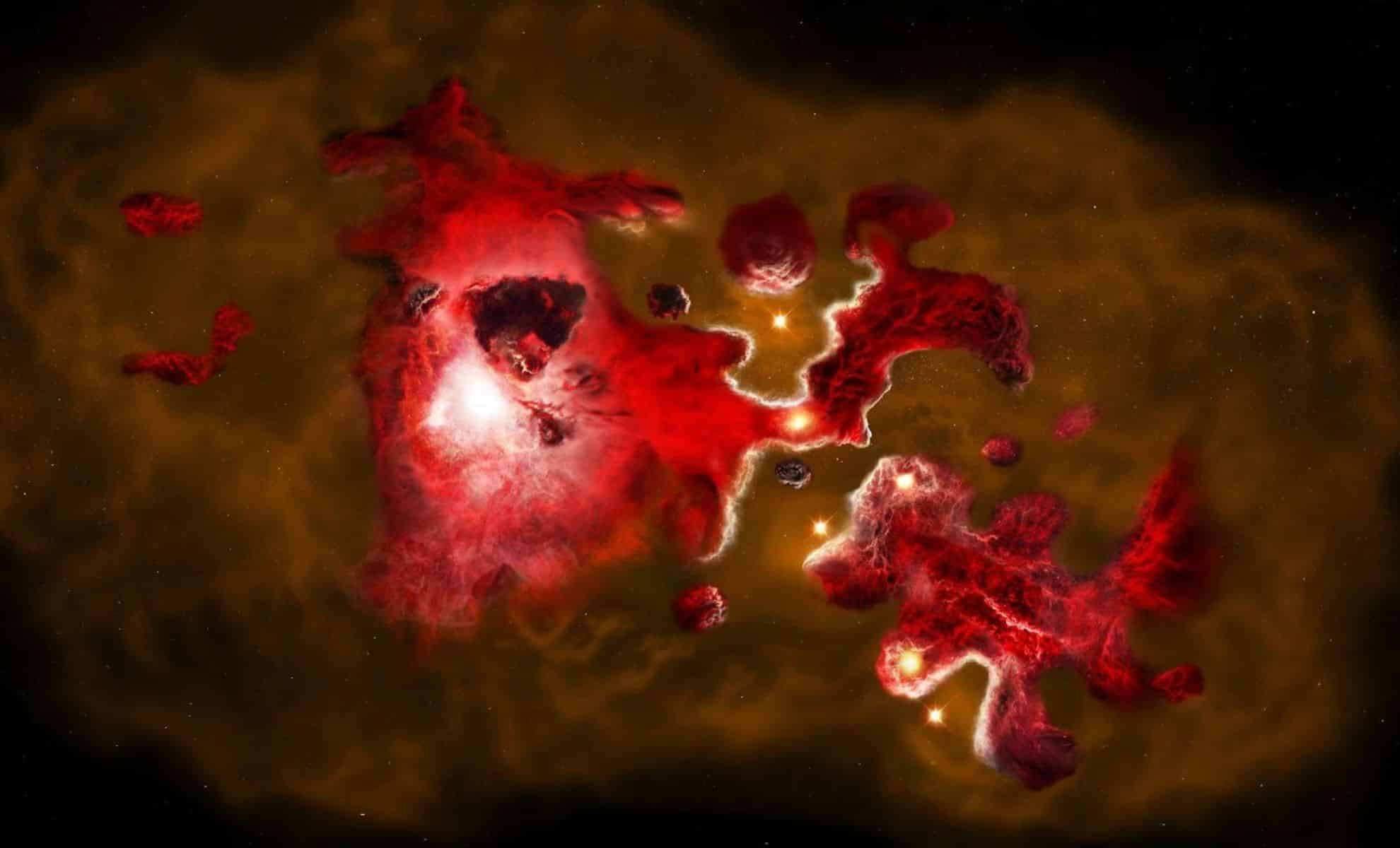The ALMA Observatory, one of the world’s most advanced astronomical facilities, has uncovered unprecedented details about the earliest galaxies formed in the universe. The results of the CRISTAL survey, an ambitious research project that spans across several years, showcase the power of the Atacama Large Millimeter/submillimeter Array (ALMA) to explore the early cosmos. By focusing on galaxies just one billion years after the Big Bang, the survey has provided detailed maps of cold gas, dust, and stellar formations, offering a new perspective on how galaxies evolved during their infancy.
The groundbreaking study is not the first to showcase ALMA’s immense capabilities. Previously, ALMA helped reveal key information about the formation of galaxies, tracing star formation in the distant universe. However, the CRISTAL survey takes it a step further, presenting a complete view of galactic ecosystems. These findings, when combined with earlier works, provide a more thorough understanding of galactic birth and evolution. As scientists continue to examine how our universe’s galaxies formed, these recent discoveries by ALMA play a crucial role in reshaping our understanding of cosmic history.
A Closer Look at Early Galaxies: The CRISTAL Survey
The CRISTAL survey was designed to observe galaxies from a period known as the “cosmic dawn,” roughly one billion years after the Big Bang. Using the unique capabilities of ALMA, the survey reveals crucial aspects of early galactic structures, most notably the cold gas and dust that serve as the building blocks for stars. By focusing on [CII] emission, a type of light emitted by ionized carbon atoms, researchers could map the internal structures of 39 galaxies. These galaxies were selected to represent the typical star-forming populations of the early universe, providing essential clues into how galaxies like the Milky Way took shape.
“Thanks to ALMA’s unique sensitivity and resolution, we can resolve the internal structure of these early galaxies in ways never possible before,” said Rodrigo Herrera-Camus, the principal investigator of the CRISTAL survey. “CRISTAL is showing us how the first galactic disks formed, how stars emerged in giant clumps, and how gas shaped the galaxies we see today.” This breakthrough allows scientists to move beyond basic observations of distant galaxies and explore their complex structures, offering insights into their star formation processes and overall evolution.

The Formation of Galactic Disks and Clumpy Star Formation
One of the most significant findings of the CRISTAL survey is the discovery of large-scale, clumpy star formation in the early galaxies. These stars formed in clusters, with each spanning thousands of light-years. Such findings not only challenge previous assumptions about how early stars formed but also reveal the chaotic and energetic environment in which these galaxies took shape. As galaxies developed, they formed dense clumps of gas and dust where stars emerged. These clumps provided the fuel for star formation, allowing galaxies to grow and evolve at rapid rates during their infancy.
“What’s exciting about CRISTAL is that we are seeing early galaxies not just as points of light, but as complex ecosystems,” said Loreto Barcos-Muñoz, co-author of the study and astronomer at the U.S. National Radio Astronomy Observatory (NRAO). “This project shows how ALMA can resolve the internal structure of galaxies even in the distant Universe — revealing how they evolve, interact, and form stars.” By visualizing these clumps, the CRISTAL survey offers an in-depth look at the very nature of star formation in the early universe and its connection to the overall structure of galaxies.
Cold Gas and Cosmic Dust: Understanding the Role of Gas in Galaxy Formation
Another key aspect of the CRISTAL survey is its examination of the cold gas that permeates these early galaxies. This gas plays a vital role in the formation of new stars, serving as the raw material that fuels stellar birth. Observations showed that the cold gas often extended far beyond the visible stars, a clear indication that it was either feeding future star formation or being expelled through stellar winds. In some cases, this gas was found to form rotation patterns, which hint at the formation of early galactic disks—a precursor to the spiral galaxies that would later dominate the universe.
“These observations highlight ALMA’s potential as a time machine, allowing us to peer into the early ages of the Universe,” said Sergio Martín, Head of the Department of Science Operations at ALMA. “Programs like CRISTAL demonstrate the power of ALMA’s Large Programs to drive high-impact science. They allow us to tackle the big questions of cosmic evolution with the unprecedented depth and resolution that only a world-class observatory like ALMA can provide.” These findings not only reinforce the importance of gas in galactic formation but also demonstrate how ALMA’s advanced technology can help scientists peer deep into the universe’s history.
